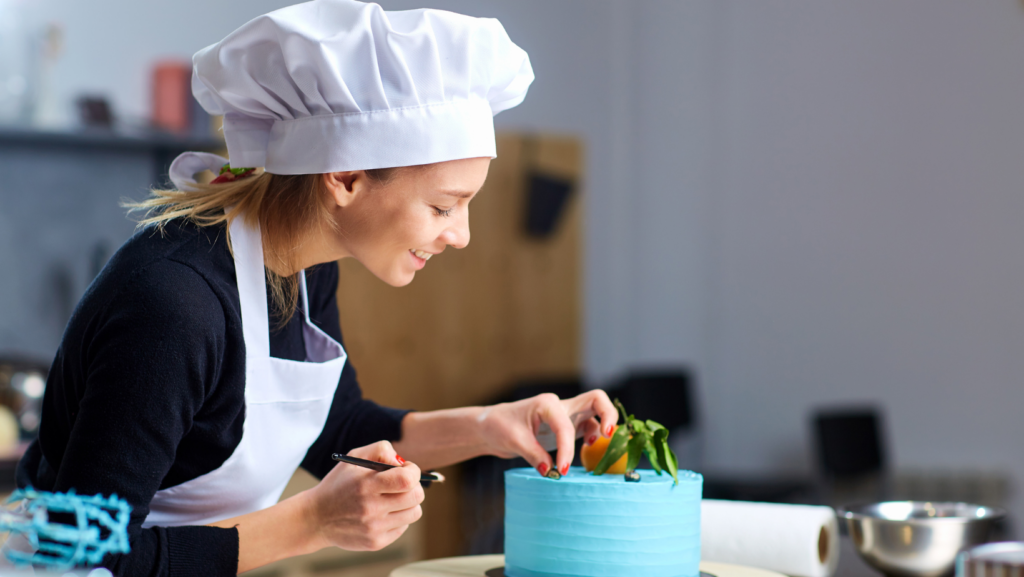In the world of confectionery artistry, floral cake decoration holds a special place. It’s a delightful blend of creativity and culinary skill, transforming a simple dessert into a stunning centerpiece. From vibrant marzipan roses to delicate buttercream daisies, the possibilities are as endless as they are beautiful.
Whether you’re a seasoned baker looking to up your game, or a novice eager to dip your spatula into the colorful world of cake decorating, you’ll find floral designs both challenging and rewarding. So, let’s embark on a sweet journey into the art of floral cake decoration, where every petal tells a delicious story.
Floral Cake Decoration
 Delving deeper into the world of floral cake decoration, join us as we explore the intricacies of this culinary discipline. From choosing the right flowers to distinguishing between edible and non-edible ones, every detail matters when adorning cakes with floral designs. When trying to make a cake bloom with bastions of color, it’s integral to know how to choose the right flowers. It’s crucial to note that practicing these choices often leads to honing a baker’s sense of floral aesthetics, enhancing their skill in creating beautiful cake decorations.
Delving deeper into the world of floral cake decoration, join us as we explore the intricacies of this culinary discipline. From choosing the right flowers to distinguishing between edible and non-edible ones, every detail matters when adorning cakes with floral designs. When trying to make a cake bloom with bastions of color, it’s integral to know how to choose the right flowers. It’s crucial to note that practicing these choices often leads to honing a baker’s sense of floral aesthetics, enhancing their skill in creating beautiful cake decorations.
It’s equally important to understand the difference between edible and non-edible flowers when decorating cakes. Edible flowers like violas, cornflowers, and nasturtiums offer kaleidoscopic color and subtle flavor to cakes. Take care, however, as some flowers—like azaleas, lilies, and foxgloves— are toxic and should never be used in food preparation. Before choosing a flower, a quick research about its edibility is a wise step. This ensures not just a visually pleasing treat, but a safe, edible masterpiece.
Tools and Materials Needed for Floral Decoration
 Venturing into the realm of floral cake decoration entails the acquisition of specific tools and materials. These items vary in complexity, falling into two categories: essential tools for beginners and advanced tools for detailed designs. For neophytes dipping their toes into the waters of cake decoration, several key tools aid in laying the groundwork.
Venturing into the realm of floral cake decoration entails the acquisition of specific tools and materials. These items vary in complexity, falling into two categories: essential tools for beginners and advanced tools for detailed designs. For neophytes dipping their toes into the waters of cake decoration, several key tools aid in laying the groundwork.
- Decorating Tips: They’re the pastry bag’s end point, creating different shapes while piping frosting onto the cake. For instance, round tips generate lines, dots, and writing while petal tips produce ruffles, bows, and flowers.
- Pastry Bags: Versatile tools used for piping icing flowers and decorative patterns onto the cake. Reusable fabric or plastic cones often fulfill this role, though disposable plastic bags also serve well.
- Decorating Comb: This utensil, featuring a plain edge on one side and serrations on the other, smoothes the icing or creates textured designs.
By understanding and procuring these tools, decorators, from beginners to advanced, efficiently create floral arrangements on cakes, giving each creation a visually astounding and flavorful twist.
Step-by-Step Guide to Decorating a Cake with Flowers
 Having covered the intricacies of floral cake decoration and essential tools, it’s now time to delve into the practical side of decorating a cake with flowers. Here’s a step-by-step guide to help you on your journey. After flowers preparation, it’s time to turn your attention to arranging them on the cake. Follow these steps to achieve a visually appealing design:
Having covered the intricacies of floral cake decoration and essential tools, it’s now time to delve into the practical side of decorating a cake with flowers. Here’s a step-by-step guide to help you on your journey. After flowers preparation, it’s time to turn your attention to arranging them on the cake. Follow these steps to achieve a visually appealing design:
- Frosting: Start by evenly frosting the cake. A palette knife is a valuable tool for this step, ensuring a smooth surface.
- Planning: Visualize your design layout. Generally, placing larger flowers first helps create a balanced composition.
- Placement: Insert the trimmed stems into your cake, starting with larger flowers and then filling in gaps with smaller blooms.
- Checking: Continually review your arrangement, adjusting the flowers as needed until you’re satisfied with the design.
- Preserving: To keep the flowers fresh, store your cake in a cool location until it’s time for presentation.
By adhering to these steps, anyone can start to master the art of floral cake decoration, turning a simple cake into a stunning centerpiece. Take care, however, as some flowers—like azaleas, lilies, and foxgloves— are toxic and should never be used in food preparation. Before choosing a flower, a quick research about its edibility is a wise step. This ensures not just a visually pleasing treat, but a safe, edible masterpiece.

